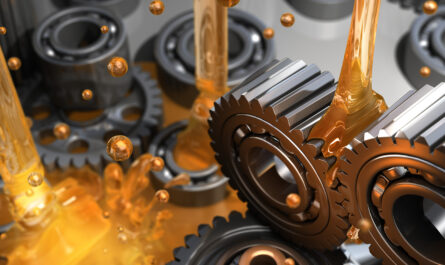
Solid state drives or SSDs have quickly become the standard storage device for modern computers and other electronic devices. They provide significant benefits over traditional hard disk drives (HDDs) through faster speeds, more durability, and lower power consumption. This article explores the technology behind SSDs and how they are reshaping data storage.
What are SSDs?
At a basic level, solid state drive are data storage devices that use integrated circuit assemblies as memory to store data persistently. Unlike HDDs which use spinning magnetic platters, SSDs have no moving parts. Data is stored electronically in memory cells made from flash memory chips, usually NAND flash. This makes SSDs solid state devices rather than mechanical.
SSDs connect to systems using common storage interfaces like SATA, PCIe, and m.2. They appear as a standard block storage device to the operating system just like an HDD. The main difference is how data is organized and accessed at the hardware level. SSDs access data through reading and writing directly to memory cells rather than spinning magnetic platters.
Speed and Performance Gains
The lack of any moving mechanical components gives SSDs a significant speed advantage over HDDs. SSD read speeds typically range from 500MB/s to 550MB/s for SATA SSDs, with PCIe SSDs capable of over 3GB/s. This is around 5-10 times faster than typical HDD read speeds.
More importantly, SSD access times for reading and writing data are near-instantaneous measured in microseconds. This compares to HDD access times of 8-12 milliseconds which forces the drive head to physically move to the correct location on the disk. For tasks involving lots of random read/writes like booting an OS, launching applications, or file/database operations – SSDs can be over 100 times faster than HDDs.
Other advantages include faster load times for games and applications, better multitasking performance, and an overall more responsive computing experience. SSDs have become standard even in lower-cost computers because of the dramatic usability benefits for everyday tasks. For creative professionals and gamers working with large files, the speeds can significantly boost productivity.
Durability and Reliability Improvements
Without any moving parts, SSDs are also much more durable and resistant to shock than HDDs. They have no issues with vibration or accidental bumps and drops that could cause data loss on mechanical drives. SSDs also consume far less power which makes them ideal for battery-powered devices.
Flash memory cells inside SSDs have a limited lifetime based on the number of program/erase cycles. However, modern SSD controllers use wear leveling and overprovisioning techniques to spread writes evenly across cells. Rated SSD lifespans now exceed 5 years of typical usage before cells start degrading. HDDs are still more durable long-term after 5+ years, but SSDs have made great gains to match consumer usage cycles.
Adoption in Data Centers and Enterprise Storage
Due to their blazing fast speeds and reliability, SSDs have rapidly grown in adoption beyond consumer PCs. SSDs are now also commonly used in servers, high-performance workstations, video editing machines, and other commercial applications. Their low power usage also makes them ideal for density-optimized data center storage.
Many organizations are now implementing SSDs as a tier of ultra-fast storage in their storage networks. Common uses include boot drives, VDI desktop images, databases, and other performance-sensitive applications. By intelligently tiering “hot” frequently accessed data onto SSDs while keeping less active data on HDDs, organizations see dramatic improvements to application response times. This has allowed previously impossible workflows like real-time analytics on huge datasets.
Advances in interface technology are also fueling SSD adoption. The more common PCIe 3.0 and 4.0 SSDs allow for up to 8GB/s transfers, fully saturating high-end NVMe storage networks. New technologies like storage class memory further blur the line between memory and storage. The future of high-performance data center infrastructure is clearly centered around flash and other solid state technologies.
Conclusion
While HDDs still have advantages in dollar-per-gigabyte for mass capacity storage, solid state drive have made stunning advances to dominate performance-centric workloads. Their combination of lighting speeds, robust reliability, low power usage, and competitive prices make them ideal for almost any application where responsiveness matters most. As flash technology continues improving, SSDs will likely replace HDDs as the standard primary system drive across all device categories in the coming years. The solid state revolution has arrived transforming how we work, play, and handle data in the digital era.
*Note:
1. Source: Coherent Market Insights, Public sources, Desk research
2. We have leveraged AI tools to mine information and compile it



